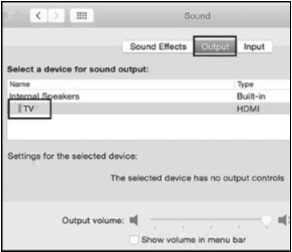System requirement
Not all USB-C ports support all features of USB-C. Some computers and smartphones only support data over USB-C for external storage such as flash drives while some devices support video and charging over USB-C. Check the below article about the USB-C port capability. If you are not sure, please consult the manufacturer for this information.
http://kb.cablematters.com/index.php?View=entry&EntryID=86
Symptom: The Docking Station is not functioning properly on a Windows computer with Thunderbolt 3. Symptoms include no video, flickering video, or an unstable USB peripheral connection.
Solution: Update BIOS, Thunderbolt 3 firmware, Thunderbolt 3 driver, and Intel Graphics Driver from the manufacturer website. For more details, refer to articles below:
BIOS, Firmware and Driver Updates
Symptom: Second Display is not recognized by the Docking Station
The Docking Station supports connecting a single 4K Ultra HD display at 30hz. This requires a 4K capable host computer and a 4K rated HDMI / DisplayPort cable.
The Docking Station also supports connecting two Full HD 1080p displays at 60hz.
When connecting two 4K displays, identical display models are recommended. The first display will output 4K resolution while the second display will only output 1080p.
| Display Resolution | Number of Monitors Supported |
| 1920x1080 @ 60hz (Full HD) | 2 |
| 2560x1440 @ 60hz | 1 |
| 3840x2160 @ 30hz (Ultra HD) | 1 |
If the second display is recognized in Windows but does not light up, most likely there is not enough bandwidth remaining for the second display. Please manually lower the resolution of the first display and connect the second display in
'Control Panel' > 'Display' > Adjust Resolution
Some daisy-chainable displays have built-in MST functionality. In this case, the DisplayPort MST (sometimes called DisplayPort 1.2 or DP 1.2) must be turned off in the display settings.
- In the display configuration menu, look for the DisplayPort
- Select the option to DISABLE DisplayPort 1.2
- Confirm the selection
You may need to reconnect the DisplayPort cable after making this change. If you are still experiencing issues setting up two monitors, please check the article below for DisplayPort MST troubleshooting.
https://kb.cablematters.com/index.php?View=entry&EntryID=104
Symptom: No signal when connecting to some monitors with DisplayPort input and output.
The daisy-chainable monitors such as Dell P2415Q and P2715Q 4K monitors have two DisplayPort connectors. One of the DisplayPort connectors is for DisplayPort input while the other one is for DisplayPort output. The DisplayPort output is designed for daisy chaining a second monitor. Please make sure to connect this adapter to the DisplayPort input.
Symptom: Ethernet is not functioning
Solution: install the correct Ethernet driver
1. Go to www.cablematters.com/downloads
2. Select the correct product from the list.
3. Download and install the driver for your operating system.
4. Reboot your computer.
Symptom: Ethernet stopped functioning on macOS after upgrading to 10.13 High Sierra
Refer to below article about User-Approved Kernel Extension Loading on macOS 10.13 High Sierra
User-Approved Kernel Extension Loading
Symptom: Mouse lag or missing keystrokes when connecting a wireless mouse/keyboard to USB 3.0
The 2.4 GHz band is a widely used unlicensed radio frequency band for devices such as wireless routers and wireless PC peripherals such as a mouse or keyboard.
USB 3.0 has a 5 Gbit/s signaling rate. The noise from the USB 3.0 data spectrum can create a conflict in the 2.4–2.5 GHz range. This noise can radiate from the USB 3.0 connector on a PC platform, the USB 3.0 connector on the peripheral device, or from the USB 3.0 cable. If the antenna of a wireless device operating in this band is placed close to any of the above USB 3.0 radiation channels, it can pick up the broadband noise and cause interference. This may result in a decreased throughput on the wireless link.
The resolution is to use a USB 2.0 extension cable to connect the wireless mouse / keyboard dongle to USB 3.0 ports.
Symptom: The Docking Station is not recognized or one or more ports is not functional
Unplug all cables and peripherals, restart the computer, and then reconnect everything.
Symptom: Computer does not charge or charges at a reduced speed
This Docking Station can pass up to 60 watts of power to the computer. Some computers require more than 60 watts. The power may be disabled through USB-C or charge at a reduced speed when only 60 watts of power is provided and the computer requires more.
Symptom: Audio is not transmitted to monitor through DisplayPort or HDMI
Some monitors do not have built-in speakers. Therefore, audio must be transmitted separately. If audio is supported, please follow the steps below to select the correct playback device:
Windows:
1) Open the 'Sound' menu by searching or right clicking the sound icon on the taskbar
2) In the Playback Tab, select the display with DisplayPort or HDMI
3) Click Set Default
4) Click OK to save the settings

MacOS:
1) Open the Apple Menu and go to System Preferences
2) Click the Sound icon
3) Click the Output tab
4) Select the display with DisplayPort or HDMI

For more information about our USB-C products including drivers and user manuals, please visit the USB-C page on our website

